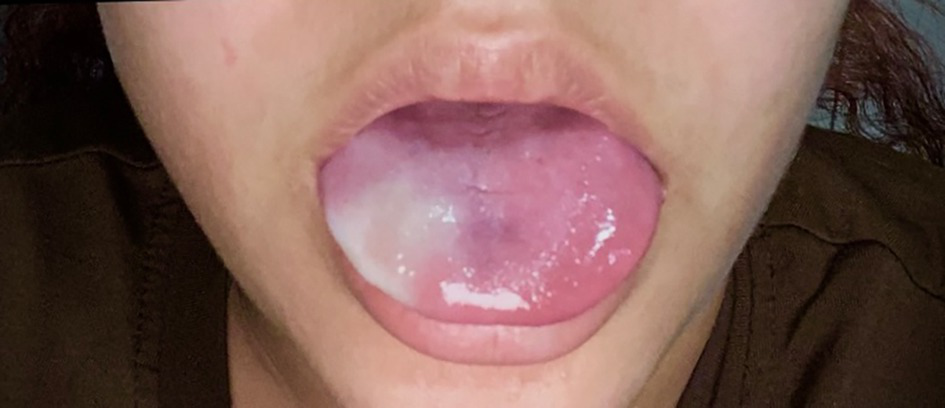
An 18‐year‐old Australian, Indigenous woman with no medical history presented with five months of small joint polyarthralgia and Raynaud phenomenon. She reported intermittent, well demarcated tongue pallor associated with altered sensation, triggered by cold exposure. She had strongly positive speckled anti‐nuclear antibodies, with anti‐U1RNP (anti‐U1 ribonucleoprotein), anti‐SSA (anti‐Sjögren's‐syndrome‐related antigen A), anti‐SSB (anti‐Sjögren's‐syndrome‐related antigen B), anti‐Ro52, and anti‐double‐stranded DNA antibodies and rheumatoid factor identified. The patient was diagnosed with an undifferentiated connective tissue disease at risk of evolving into mixed connective tissue disease (MCTD) or another autoimmune rheumatic disease (AIRD) over time. Limited data exist on the prevalence of AIRDs in Indigenous Australians and, to the authors’ knowledge, there have been no published cases of undifferentiated connective tissue disease reported in this population.1 Lingual Raynaud phenomenon is a rare clinical sign but has been reported in several AIRDs, most commonly MCTD and systemic sclerosis.2,3,4,5
- 1. Eades LE, Sines J, Hoi AY, et al. Autoimmune rheumatic disease in Australian Aboriginal and Torres Strait Islander peoples: what do we know? Semin Arthritis Rheum 2024; 65: 152354.
- 2. Katada Y, Tanaka T. Lingual Raynaud's phenomenon. N Engl J Med 2012; 366: e12.
- 3. Bridges MJ, Kelly CA. Raynaud's phenomenon affecting the tongue of a patient with scleroderma. Ann Rheum Dis 2002; 61: 472.
- 4. Cohen JC, Palomba ML, Morris LG. Raynaud's phenomenon of the tongue. J Rheumatol 2013; 40: 336.
- 5. Gilbert EL. Lingual Raynaud's phenomenon in a patient with mixed connective tissue disease. Rheumatol Autoimmun 2021; 1: 101‐103.





Patient consent:
The patient gave written consent for publication.
No relevant disclosures.